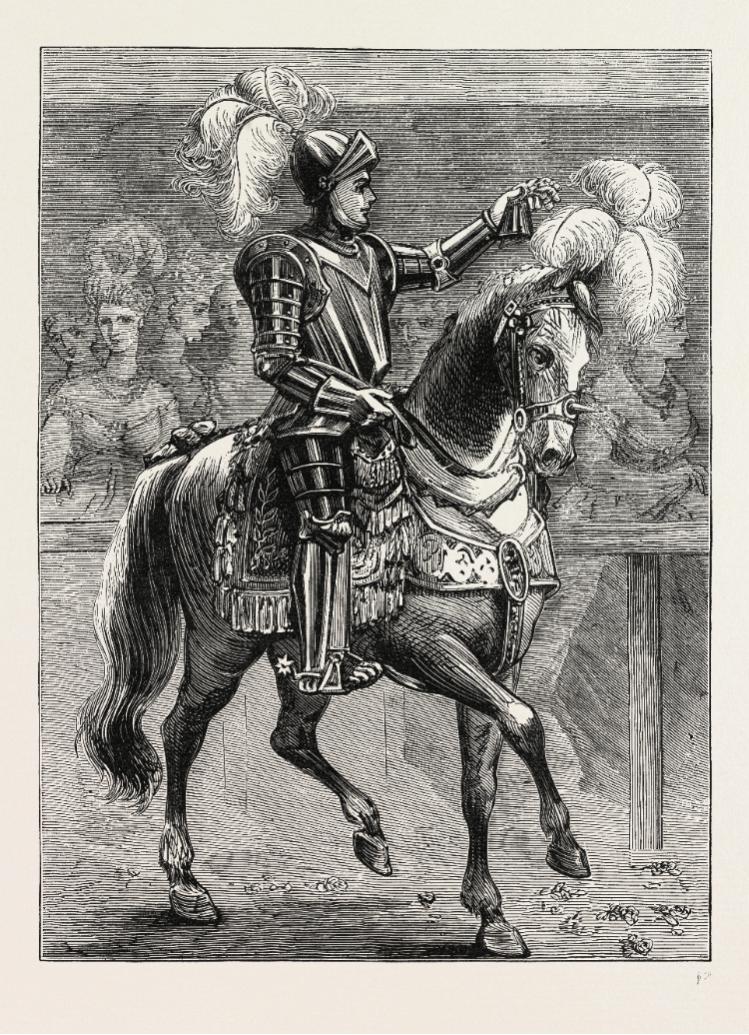Throwing down the gauntlet: The King's Champion explains his family's historic coronation role
The King's Champion (Credit: Classic Image / Alamy Stock Photo)
3 min read
Francis Dymoke’s family has played a key role in coronations since 1066, meeting anyone challenging the king’s accession to the throne in combat. Now, the King’s Champion tracks his role back through history
Britain has many wonderful and ancient offices, many of these are in abeyance until a coronation, one of these being that of the Honourable the King’s Champion.
In 1066, 34 generations ago, Robert de Marmion came from Fontenay-le-Marmion in Normandy with the Duke of Normandy to fight in the Battle of Hastings. As a result, when William was crowned king in 1066, Robert de Marmion was created a dignitary of the crown. This gave him, through feudal law, land at Scrivelsby and Tamworth. The land was held in return for acting as champions at coronations in perpetuity. It is thus vital that the Dymoke Family hold onto Scrivelsby if they are to continue to perform their role.
At the banquet of James II, the champion entered Westminster Hall on a white horse in full armour
A story like this is remarkable because of the length of its tenure of a medieval office, and it still jingles and pulsates with the prowess of the knights of old.
Sir Walter Scott had a lot to say about the Marmions.
My castles are my King’s alone
From turret to foundation stone…
And then again like a clarion call
Charge, Chester, Charge!
On Stanley on!
Were the last words of Marmion.
Lord Philip Marmion died in 1291 and after two generations, Scrivelsby went to his granddaughter. She married Sir John Dymoke. At the coronation of Richard II in 1377 there was a dispute and the court of commissioners established Scrivelsby as the seat of the King’s Champion, not Tamworth. It has remained with the Dymokes of Scrivelsby since this time.
The purpose of the office was to meet in combat anyone who challenged the king’s accession to the throne, which was done at the banquet following the coronation.
 The King's Champion (Credit: Artokoloro / Alamy Stock Photo)
The King's Champion (Credit: Artokoloro / Alamy Stock Photo)
At the banquet of James II, the champion entered Westminster Hall on a white horse in full armour with plumes of feathers on his helmet. He was flanked by two trumpeters with the Dymoke Arms on their banners announcing his entry, along with the sergeant-trumpeter, two serjeant-at-arms carrying maces, the champion’s two esquires richly dressed and carrying his lance and shield, the York herald with the words of the challenge, then the champion on his horse with the gauntlet in his right hand, the Earl Marshal to his left and Lord High Constable to his right. And at the end, four pages.
The York herald or Garter King of Arms then issued the challenge:
‘If any person of what degree soever, high or low, shall deny or gainsay our sovereign lord the King to be the right heir to the imperial crown of this realm of England, or that he ought not to enjoy the same, here is Champion who saith that he lyeth, and is a false traytor; being ready in person to combat with him and in the quarrel will adventure his life against him, on what day sover be appointed’.
The champion then throws down his gauntlet. This is then repeated a further two times as they pass down the hall. At the end the king toasts the champion and passes the cup to the champion who makes his reverence to the king.
However, without the coronation banquet the throwing down of the gauntlet cannot happen. But the Dymokes have continued to attended the coronations in their role and carry a standard in the procession into Westminster Abbey. During the four coronations in the 20th century, a Dymoke has carried either the Royal Standard or the Union Standard.
